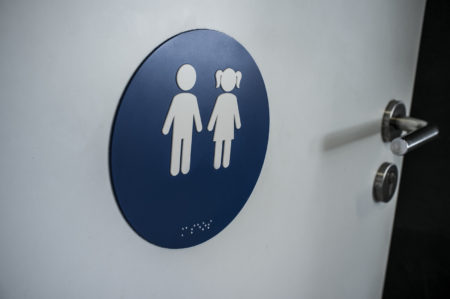 The Americans with Disabilities Act (ADA) is legislation that prohibits discrimination against people with disabilities in several areas. Its passage indicated an important turning point in history and works to ensure that people with disabilities are given the same rights as every other American. If you’re a business owner or run an organization, it’s important that you adhere to the rules of the ADA and utilize proper ADA signage to meet the regulations in place. For more information on ADA signage, here’s how it began and where it is today.
The Americans with Disabilities Act (ADA) is legislation that prohibits discrimination against people with disabilities in several areas. Its passage indicated an important turning point in history and works to ensure that people with disabilities are given the same rights as every other American. If you’re a business owner or run an organization, it’s important that you adhere to the rules of the ADA and utilize proper ADA signage to meet the regulations in place. For more information on ADA signage, here’s how it began and where it is today.
The History of ADA Signage
ADA signage was created to meet the regulations put forth by the ADA and to provide more accessibility to those living with disabilities. ADA signage is used in every public building and business operating according to legislative rules in the U.S. This began in July 1990 when the ADA was signed into law in an effort to remove physical barriers that restricted use of a business or public space for those living with disabilities. Since then, more ramps have been installed, signs now come printed with Braille, and public restrooms are easier to identify and access. This allows those living with disabilities to have the same opportunities as everyone else, especially in regard to purchasing goods or services, equal employment opportunity, and participation in government programs. ADA signage helps accomplish this by making navigation not only possible, but easier.
Understanding ADA Signage Today
Since it’s origination, the ADA has continued to evolve and improve. Now, ADA signage is a little different and has stricter requirements that need ongoing revisions for standards. As of today, businesses and organizations have specific requirements they need to meet regarding ADA signage. This includes specifications on placement, location, and even the regulation of spacing and font use.
These regulations apply to most of the signs used in buildings, therefore, require strict compliance. Specifically, ADA signs that need to meet regulations include signs that identify entryways or exits, signs that identify the function of a room or space (i.e., bathroom, cafeteria, et cetera.), signs that provide direction, and signs that identify, direct, or inform an individual on accessible features.
Signs must never block exits or entry ways and need to be oriented according to specific parameters depending on their location. Check your state specifics to make sure that you’re complying with local and federal guidelines. Adhering to ADA signage regulations on the most basic level requires you to make sure that you have four types of signage in your business or organization. These include identification signs, informational signs, directional signs, and overhead signs such as the ones used for emergency exits.
If you’re in need of ADA-compliant signage for your business or organization, contact Impact Color today. We’re experienced in creating signage that meets ADA standards and helps to compliment your business, regardless of industry. To learn more about your options, contact us today or browse our services online.


